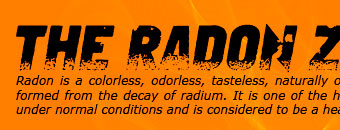 |
 |
 |
||||
|
||||||
| Call: 417-844-0942 | ||||||
|
»Mail Irradiation This page provides an overview of how and why we irradiate mail in certain parts of the U.S. Overview In October 2001, the deadly micro-organism anthrax was found in mail sent to various news agencies and to the offices of U.S. Congressmen. As a precaution, the U.S. Postal Service, with assistance from FBI and national public health experts, began irradiating mail to kill potentially present anthrax spores. Irradiation of mail kills organisms in or on the envelopes and packages, thereby protecting the recipient against possible bacterial or viral releases from that mail. It is a reliable sterilization method that can handle the large flows of mail that come to Federal agencies. Irradiating mail does not make it radioactive. The process is comparable to shining a flashlight on the mail – when the flashlight is turned off, mail does not glow, or radiate back the light it received. However, mail tends to be brittle and discolored and may have an unusual smell after it has gone through the irradiation process. Remember Irradiation does not make mail radioactive Individuals who handle large amounts of irradiated mail have complained of adverse health effects, including skin irritation; eye, nose, and throat irritation; headaches; and nausea. Initially, some workers mistakenly feared these symptoms were due to radiation. It was necessary to ensure they understood the basics of radiation science involved in the process and that the mail itself was not radioactive. The symptoms may have resulted from a combination of factors, including a dry environment, drying effects on the skin from handling irradiated paper, chemicals released from plastics in the mail, and the odor from the irradiated mail. The irradiation process sterilizes mail by passing it through a high-energy beam--an electron beam or x-ray. This beam is ionizing radiation that delivers in a dose approximately 2 million times more potent than a chest x-ray. The beam penetrates deep into the mail to destroy germs and viruses and is capable of penetrating letter trays and packages. To ensure that employees and visitors are not exposed to even low levels of radiation at the irradiation facilities, very thick concrete or lead-lined walls shield the exposure rooms. Radiation levels are closely monitored at these facilities to ensure that workers are safe. |
|
|||||